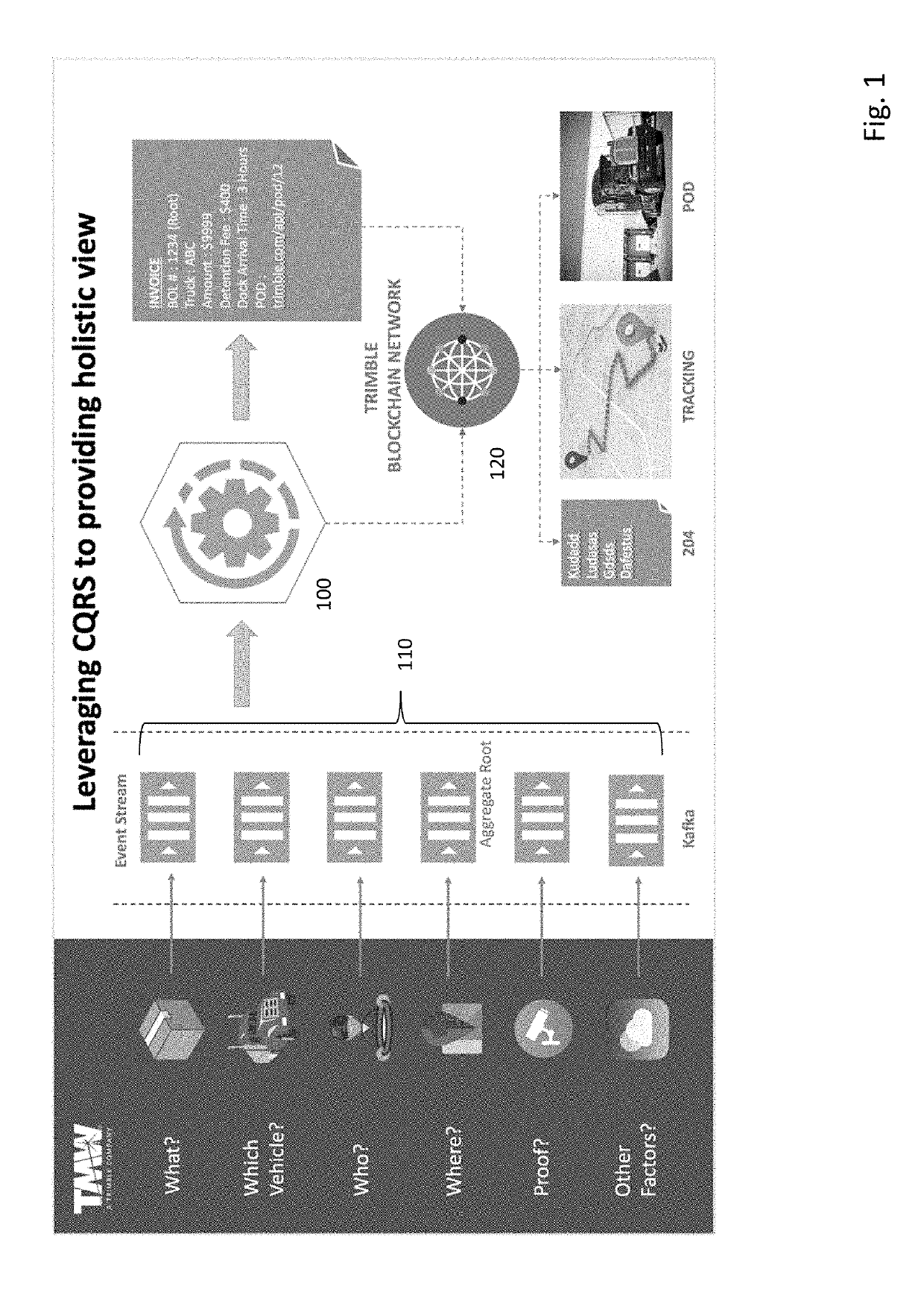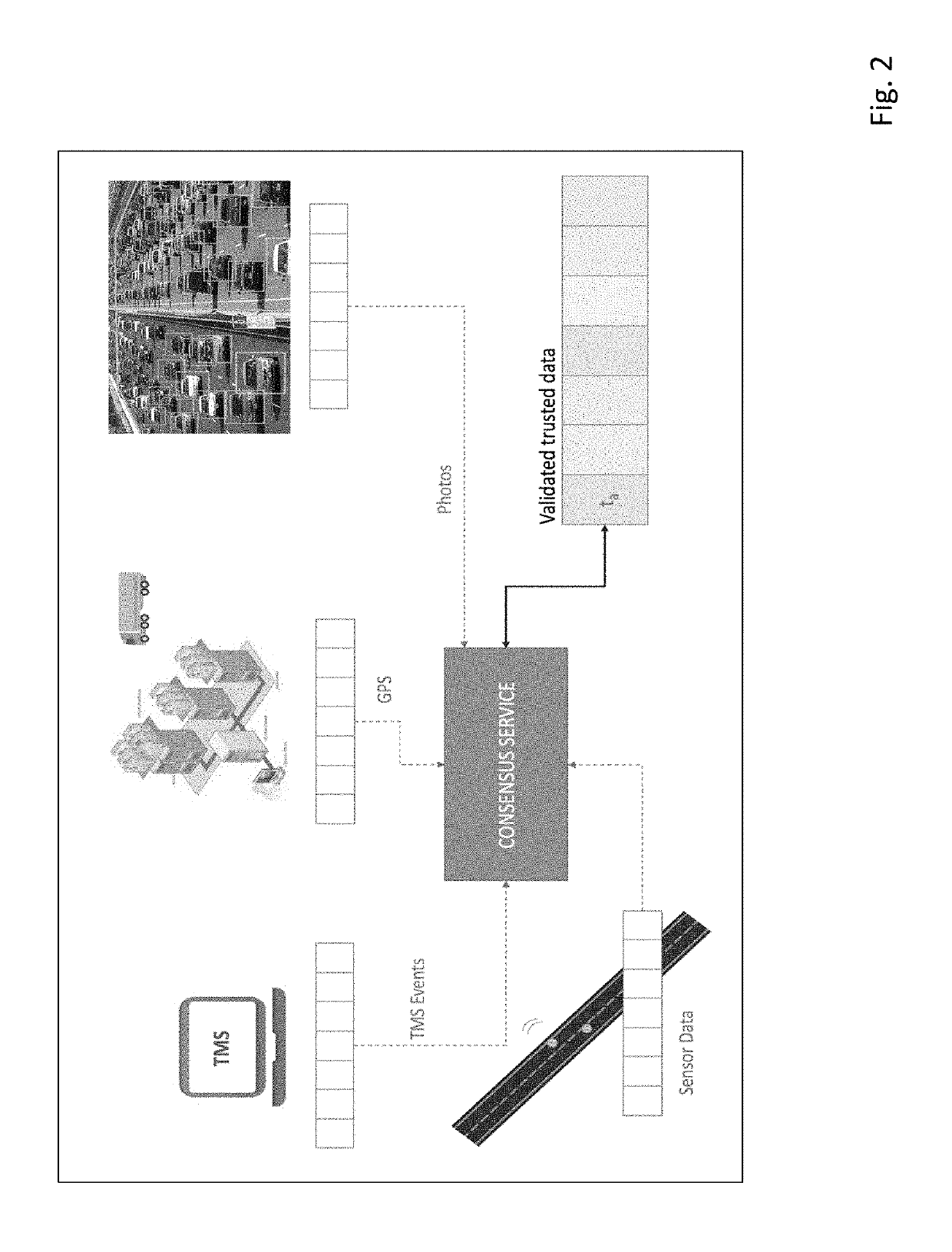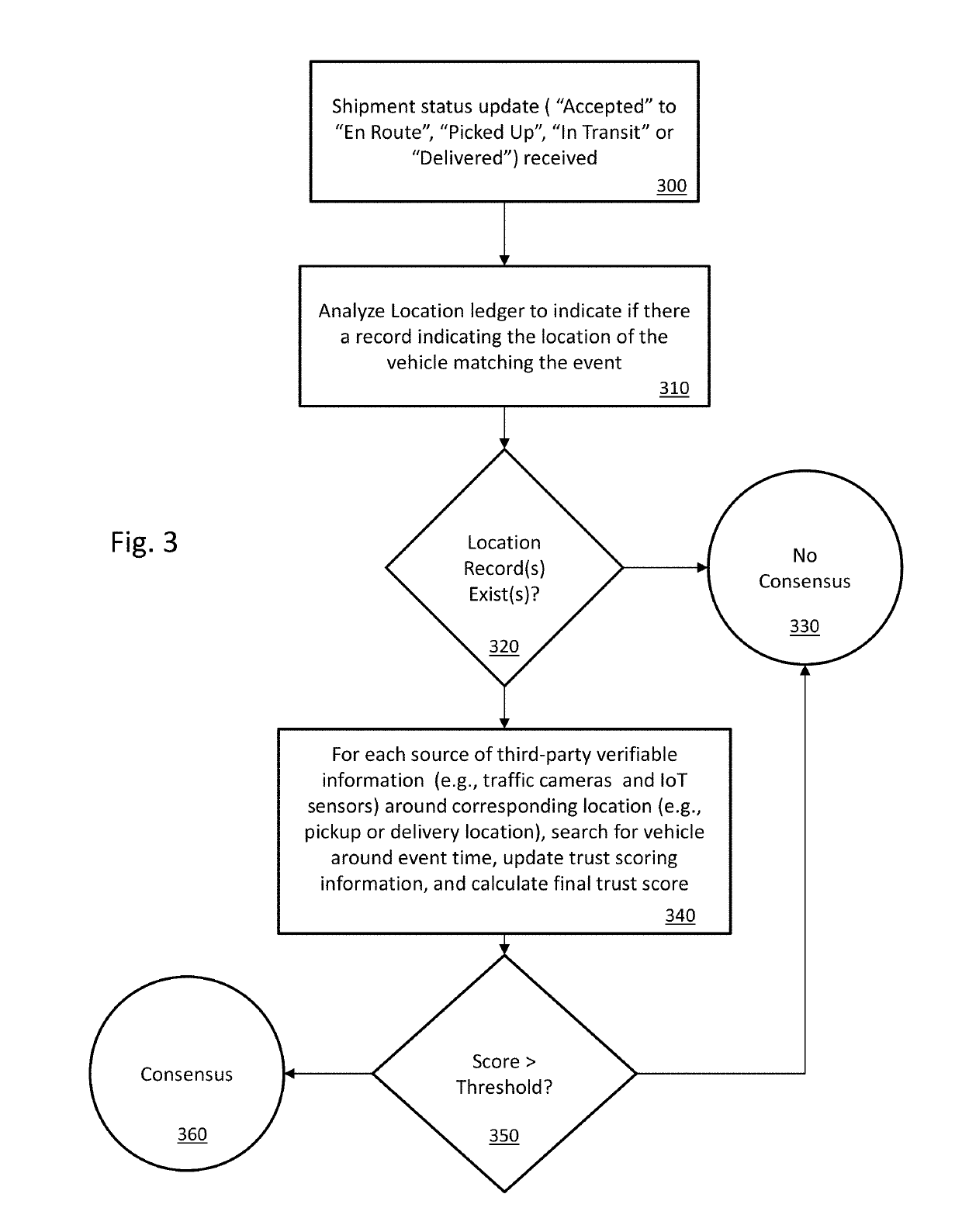Real-Time Detention Avoidance System
a real-time detention and avoidance technology, applied in the field of real-time detention avoidance system and method, can solve the problems of improper staged delivery decisions, poor real-time or just-in-time delivery decisions, and outdated delivery information from the shipper
- Summary
- Abstract
- Description
- Claims
- Application Information
AI Technical Summary
Benefits of technology
Problems solved by technology
Method used
Image
Examples
Embodiment Construction
[0015]Turning to FIG. 1, a data transfer diagram illustrates collecting and processing data related to a series of shipments from a number of sources. At least one computer system 100 receives a set of event streams 110 formed by grouping and / or processing information from respective sources into information to be processed by the computer system 100. In one embodiment, a message queue (e.g., as implemented by the “Apache Kafka platform”) handles the creation of the event stream to be used by the system 100. In general, event streams can be formed by packaging the raw information into one or more packets that are transferred to a desired location (e.g., using an encrypted or unencrypted communications stream, such as a IPSec session or a TCP / IP connection, respectively). The computer system 100 receives the event streams 110 and performs a number of operations on the event streams (and optionally also on internally generated data or on data from data sources not shown).
[0016]In one ...
PUM
 Login to View More
Login to View More Abstract
Description
Claims
Application Information
 Login to View More
Login to View More - R&D
- Intellectual Property
- Life Sciences
- Materials
- Tech Scout
- Unparalleled Data Quality
- Higher Quality Content
- 60% Fewer Hallucinations
Browse by: Latest US Patents, China's latest patents, Technical Efficacy Thesaurus, Application Domain, Technology Topic, Popular Technical Reports.
© 2025 PatSnap. All rights reserved.Legal|Privacy policy|Modern Slavery Act Transparency Statement|Sitemap|About US| Contact US: help@patsnap.com



